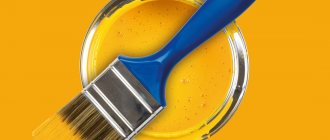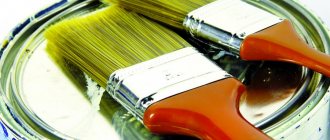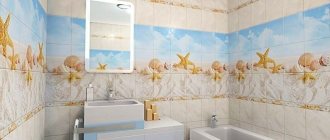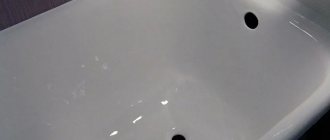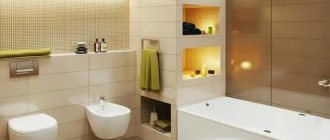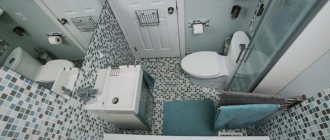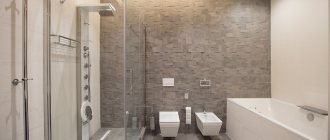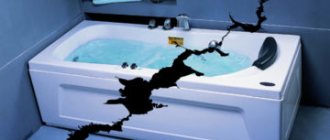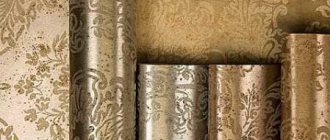When ordering a new acrylic bathtub from an online store, we want it to last as long as possible, not cause hassle with repairs and maintenance, and at the same time please the eye with its sparkling whiteness. Everything is in your hands: the appearance and service life of the plumbing fixture depends on how you care for your acrylic bathtub. To do this, you don’t have to devote the lion’s share of your free time to cleaning: we’ll tell you how you can quickly put your bathtub in order so that everyday care of the plumbing won’t be a burden.
What is acrylic
Without knowing the characteristics of the material and its weaknesses, it is impossible to understand what means can or should be used to clean a bathtub made of such an unusual material as acrylic. It contains various polymer materials made of methacrylic and acrylic acid: fabrics, glass, plastic.
Acrylic has a smooth, shiny surface that is pleasant to contact. The material retains heat perfectly, is technologically advanced (you can get the shape of a bowl of the most bizarre shape), and durable.
Durability is not synonymous with the word hardness - the surface can be easily scratched, and with a concentrated impact it can be pierced through (a glass perfume bottle falling from a shelf is enough).
The material is afraid of hot water (above 85oC the plastic softens, deforming the walls of the bowl) and household chemicals containing:
- Chlorine content - the surface, firstly, loses its shine and turns yellow, and secondly, it slowly deteriorates (pores are formed, shortening its service life);
- acetone - corrodes plastic, the first sign of which is its cloudiness. 10 ml of acetone is enough to make a dent;
- ammonia (almost all types of bleaches) - destroys the molecular structure of the material;
- formaldehyde in its composition is incompatible with all types of acrylates;
- alcohols, alkalis, acids melt acrylates.
We take into account all the above nuances of care, we’ll talk about this in detail.
"Sanox Clean Bath"
This is a budget product from a Russian manufacturer. Able to fight rust, lime and deep dirt. Reviews also say that the product can whiten the bathtub. But the gel does not work immediately. It should be applied evenly in a thin layer to the contaminated area, and then wiped with light movements. "Sanox Clean Bath" allows you to remove any stains, as well as traces of corrosion. But among the disadvantages is high consumption. You will need a lot of this gel. In addition, the composition includes oxalic acid. It must be completely removed from the surface after use. And this requires a large volume of water.
We weigh the pros and cons of acrylic bathtubs
Not so long ago in production, traditional materials such as steel or cast iron were replaced by acrylic. This is a polymer that immediately won all the leading market positions. Thanks to him, designers have ample opportunities to implement the most daring projects.
Advantages of acrylic bathtubs
It should be said right away that the poles of this material are very significant.
- Professionals note that one of the main advantages is relatively low weight when compared, for example, with cast iron. For installation, you do not need to strengthen the floor. For comparison, a standard cast iron container weighs about 80-90 kg, and that is empty. If you take a full reservoir of water, the mass will turn out to be threatening for some floors. The weight of the acrylic analogue is only 20 kg, the product full of water is safe even for an old house with dilapidated floors.
- For users, the second advantage is much more important - excellent thermal insulation. A lover of pampering will note that hot water in an acrylic bath will lose only 1-2 degrees in half an hour. During the same time, in the steel counterpart it will cool down by 10-13 degrees, and this difference is noticeable. Again, savings, with such a slow cooling, there is no need to add hot water every 15 minutes, which is positively reflected in receipts.
- Among the advantages of acrylic, it is worth mentioning its high noise insulation. Only you, and not all the neighbors on the lower floors, will know that you are planning to take water procedures. The sound of water pouring into the tank can no longer be heard beyond the threshold of the room.
- Designers increase the rating for the variety of forms. Acrylic is a polymer from which, if desired, you can create a container of any shape. In fashionable design, even round corner, polygonal bathtubs are already outdated. Nowadays, tanks in the form of stars, shells, sea animals, flowers are popular, and such forms can only be created from acrylic.
- The main advantages are strength and durability. It's all about the composition of the material from which it is made. Acrylic does not contain metals, which quickly rust and break down when in contact with water, but contains fiberglass. This component helps to keep its shape perfectly and guarantees durability.
Disadvantages of acrylic bathtubs
And there are not so many of them:
- She is afraid of very high temperatures. You should not fill this tank with water hotter than 90 degrees. This will lead to softening of the material, reducing service life. This drawback can be called insignificant.
- Scratches appear on the surface of the acrylic surface. This happens if you wash it with abrasive substances or place metal basins or buckets in the middle.
Molded containers are more susceptible to damage in the form of scratches. But sometimes, especially if the frame under the bathtub is installed incorrectly, it can simply crack.
Bathroom care equipment
To wash dishes or a cast-iron bathtub, the entire range of equipment is used, from a foam sponge to a metal sponge. The low-hardness acrylic surface of the hot tub can be scratched even by a toothbrush with medium-hard bristles. Therefore, there is a categorical prohibition (taboo) for caring for plastic hot tubs:
You can clean the acrylic surface using:
What is the acrylic surface afraid of?
Powders, creams and pastes, which we are used to using to tidy up cast iron and steel bathtubs, should not be used at all. The fact is that many of their components, which are safe for enamel, are considered too aggressive for acrylic.
At best, they will erase the shiny coating and leave scratches; at worst, they will completely destroy the structure of the material.
Acrylic bathtubs do not belong to the group of expensive products; more often they are products of the middle segment (except for elite models). For example, the BAS Fantasy model with hydromassage costs about 30 thousand rubles. – a budget option for a family with average income
For example, all-purpose cleaning powders and pastes often contain fine abrasives. The smallest solid particles do not leave marks on the enamel coating, but can ruin acrylic, which is sensitive to mechanical damage. Therefore, such universal products for the kitchen and bathroom as “Komet”, “Domestos”, “Silit” (powder) are prohibited.
In addition to abrasives, cleaning products should not contain the following ingredients:
- chlorine;
- formaldehyde;
- acetone;
- ammonia;
- oxalic acid.
Chlorine corrodes the material, making it porous and unsightly. Acetone, ammonia and some solvents destroy the shine of the coating, gradually destroying the top layer. Acids and formaldehydes are also incompatible with acrylic.
Relatively soft acrylic is afraid of hard and sharp objects. Please note that even such a sanitary measure as washing pets is dangerous for him, as their sharp claws can easily damage the coating. For such hygiene procedures, it is recommended to use a plastic basin or a specially installed tray with a separate shower.
If the damage to the bathtub turns out to be catastrophic, it can only be saved by restoration with liquid acrylic, which is carried out using special technology by professional plumbers
If you hand wash or clean bulky items in the bathtub, use a rubber mat. It will protect the bottom and walls of the container from damage that can be caused by metal buttons, fasteners or zippers. The same rug is an excellent stand for a plastic basin, which can also scratch acrylic.
Another threat to acrylic bathtubs is very hot water. It does not affect as clearly as sharp objects, but over time it destroys the top layer, making it more porous and weaker. As a result, all the negative contents of tap water - lime, rust, dirt - are absorbed into the acrylic and make the surface of the bathroom unattractive.
To ensure that the water contains fewer foreign impurities that negatively affect acrylic, fine filters are installed on the supply pipes. In the event of a water supply accident, they trap particles of clay, sand, and contaminants.
Now let's look at effective products for acrylic bathtubs, which are ideal for adding shine, removing scratches and regular maintenance.
What can't be used?
One drawback of this item is the unreliable coating; one might say there is practically no protection. This is why acrylic surfaces are easily scratched and damaged by detergents. The acrylic surface quickly becomes dull and changes color when using the “wrong” detergents.
What products should not be used for care:
What to do with yellow spots, scratches and cracks
Drops from leaking taps slowly but surely form unsightly yellow spots on the acrylic bathtub, which can be difficult to remove even with special detergents.
In this case, the stains are cleaned with the utmost care using the finest abrasive sandpaper, and then treated with a “finishing polish” for automotive paintwork. Small scratches, for example from a dog's claws, can be easily polished with a piece of felt in a circular motion, and from now on washing your pet on a rubber mat is more practical.
Noticeable cracks caused by falling heavy objects will quickly accumulate dirt. However, an important advantage of an acrylic bathtub is its repairability, so deep damage is eliminated.
How to properly care
To clean the bathtub, use a soft cloth with liquid soap. Before cleaning, you need to wipe the surface with a dry cloth to prevent the settling of plaque, which may be contained in water with increased hardness. Use special wet wipes for bathrooms.
Use specialized gels for acrylic. As a rule, they are applied to the surface and washed off after a few minutes. In addition, you can treat the bath using a mixture of water, vinegar and lemon juice.
General cleaning
To combat severe stains, use a vinegar solution. Pour hot water with vinegar and leave to stand until morning. Rinse off in the morning. Then rinse and dry the container. The second method is to fill a container with warm water with a disinfectant dissolved in it.
Leave the bath with the solution for about half an hour, then drain the water and dry.
How to clean rust, plaque and stains
Limescale deposits can be removed by using lemon juice. Treating with soda mixed in water will help prevent rust. Rust stains can be treated quickly and effectively by covering them with ammonia or hydrogen peroxide.
What to do with scratches
Special kits, which are usually supplied with the bathtub and are also sold in plumbing stores, will help you deal with scratches on the surface. The kit includes liquid acrylic or epoxy putty and a spatula. Using this kit, you can easily and quickly treat any damage, even deep ones.
Review of folk remedies
In addition to specialized products for cleaning acrylic, folk remedies such as citric acid, soda and toilet soap demonstrate effectiveness.
Lemon acid
Using citric acid, you can effectively treat dirt and rust stains on the surface of the bathtub. This substance is safe for the material and does not damage the bath.
Baking soda
A baking soda solution is also suitable for regular bath cleaning. You can use a mixture of baking soda and soda ash in equal proportions, carefully applying it to a damp surface.
Toilet or baby soap
To maintain cleanliness, regular cleaning with a soft brush and regular toilet soap is usually sufficient. However, this method will not get rid of rust stains and limescale.
How to clean a bathtub with home remedies: recipes for every day
To clean acrylic surfaces and metal fittings from rust and mineral deposits, it is convenient to use gentle home remedies:
- liquid soap;
- weak solutions of citric and acetic acid (100 grams of crystalline substance per 100 liters of water);
- diluted soda (2-3 tablespoons per 500 ml of water);
- hydrogen peroxide;
- potassium permanganate;
- toothpastes.
Residues of paint and glue are easily removed with short-term applications of alcohol.
Pollution prevention and disinfection
High standard acrylic is guaranteed to last 25-30 years and looks like new. The acrylic bathtub just needs care and careful operation. Let us mention once again the rules of their operation. In an acrylic bathtub, you should never:
As long as you stick to a weekly bath cleaning schedule and don't allow any damage, she should be fine.
Before installing a new bathtub, plumbers recommend carrying out more thorough repairs and replacing the water pipes with new ones. Then a yellow coating will not appear on the bathtub. The smooth surface is not subject to “attacks” of fungal diseases or corrosion. But it is advisable to carry out disinfection once a year.
It is not recommended to bathe pets in an acrylic bathtub.
Top 5 best cleaning products
Thanks to innovations in the chemical industry, modern bathtub cleaners attack dirt and deposits without damaging the material. However, more gentle compositions are made for acrylic surfaces, without acids and other aggressive substances.
Gels, creams and liquids for caring for acrylic bathtubs can be purchased at stores that sell household chemicals or plumbing supplies. Let's take a closer look at popular products that are easy to purchase in supermarkets and online stores.
Bugs Akrilan is one of the best products for effective cleaning of acrylic bathtubs, showers, swimming pools, and hydromassage systems. Thanks to a balanced selection of components (minimum citric acid and surfactants), it removes dirt and disinfects equally well.
The universal properties and gentle composition allow Acrylan to be used for cleaning ceramics, glass, sanitary equipment, and enamel surfaces. Easily removes complex and old stains
Users note high efficiency, a convenient mechanism of use (a spray bottle that evenly distributes the liquid) and instant action. As soon as you apply a small amount of the product and leave it for a short time, limescale stains, traces of rust, and mold disappear without a trace.
The surface of the acrylic bathtub begins to shine like new. During regular care, you may notice a sharp, specific odor, which is considered a defect in the substance. And another disadvantage is the high cost of Acrylan.
Frosch “Green Grapes” is an environmentally friendly bath and shower cleaner that features a safe, biodegradable composition and a pleasant scent. Grape acid in minimal doses is not classified as an aggressive substance, so Frosh cleans both acrylic and enamel products.
Convenient sprayer, delicate aroma of fresh grapes, easy cleaning - just what you need to quickly tidy up your acrylic bathtub
This product is chosen by those who are attentive to the environment and prefer environmentally friendly products. The natural component does not interfere with the product’s ability to effectively remove dirt. The slight smell does not cause a negative reaction. The only disadvantage of “Green Grapes” is that it does not cope with old deposits and stains. This is due to the absence of aggressive chemicals in the liquid.
Cif is a bath cream with a specially selected whitening composition. In consistency and quick action it resembles its predecessor, Cif cream with lemon, but differs in its “ultra white” effect, which gives even old bathtubs a snow-white tint.
Whitening and cleaning agents in the form of microgranules are included in the creamy mass. When used, they form a thick foam that quickly removes fresh dirt, plaque and rust.
To the excellent quality of the product you can add its reasonable cost, thanks to which Cif cream is quite in demand. However, there are also disadvantages. Regular application of the product will not be enough; additional effort will be required; in other words, the entire surface must be thoroughly wiped.
And even if you scrub very diligently, you are unlikely to get rid of limescale stains and old stains.
Sanox “Clean Bath” from Russia is a budget-friendly and long-proven product that removes rust, lime, and stubborn stains equally well.
Despite the absence of acids, Sanox perfectly cleans and whitens the bathtub. It is classified as a product in the “Green Technologies” series, as it contains surfactants, flavors and glycerin
The gel does not act immediately: it needs to be applied in a thin layer to the contaminated areas, wait a little, and then wipe with light movements. You can remove almost any stain, including rust and potassium permanganate. The product is not economical, but has the lowest cost. An inexpensive cleaning gel for everyday use is a godsend for practical housewives.
But we must not forget that the main component in this product is oxalic acid. Like all acids, it requires a large amount of water to remove from the surface of the bath after use!
LOC for bathtub cleaning from Amway has a lot of fans not only due to well-executed network marketing. Does not contain abrasive particles, therefore ideal for acrylic.
A concentrated product, consisting mainly of surfactants, effectively removes rust stains, limescale and soap stains - traces of water with increased hardness
The high cost of LOC may be noted, but its use is so economical that it quickly offsets the costs. Easily washes off with water, leaving the surface spotlessly clean and sparkling. The natural citrus aroma, the absence of chlorine and acids, and the biodegradable composition indicate the safety of the product, so it can be used by people prone to allergies.
Of course, these are not all the acrylic bath care products that can be found on the open market. There are many more of them - with the growing demand for acrylic products, sales of related products for cleaning them have also increased.
How to disinfect
Disinfection is carried out in order to clean plumbing fixtures from various microorganisms that have a detrimental effect on humans. Fungi and fungus love moisture, and it is an ideal breeding ground for them, so appropriate measures need to be taken.
You can disinfect with a weak solution of “Whiteness”, soda (just do not rub), lemon juice, vinegar or laundry soap. To do this, the product is applied to the surface of the bath and left for 15 to 45 minutes. Then you need to rinse with water and wipe the bath with a clean soft cloth, which will add additional shine.
Daily bath care
As mentioned above, in order to avoid lengthy procedures for cleaning complex stubborn stains and stains, it is advisable to at least lightly wash the bathtub after each water treatment. This process will not take much time, as it consists of very simple manipulations:
- The sponge can be soaped with any soap, but to speed up the procedure, it is better to use liquid types of soap.
- Then rub all surfaces of the bath with this sponge.
- After this, the container is rinsed generously with warm water.
- The final mandatory action is to wipe the bathtub dry with a cloth that absorbs moisture well.
Such actions will prevent the appearance of stains and plaque, and, most likely, will completely eliminate the need to use chemical detergents. Thanks to this, the bath will last much longer without losing its original fresh appearance.
Find out how to remove fungus in the bathroom, and also check out ready-made formulations and folk remedies from our new article on our portal.
Cleaning your hot tub
If hydromassage equipment is installed in the bathroom, weekly cleaning of the nozzles and regular disinfection of the system will be required. When soap suds, residual dirt and organic compounds get into the hoses, they begin to decompose and cause an unpleasant odor. When water circulates in the system, this dirt ends up in a common tank, which makes the bathing procedure unhygienic.
To fix the problem yourself, you can purchase special disinfectants for hot tubs. The bath is filled with warm water, an antiseptic is added and the hydromassage is started for 10 - 15 minutes. Then the water is drained and the bath is thoroughly washed to remove any remaining disinfectant.
Antibacterial solution Ravak Disinfectant for plumbing and hydromassage systems.
Note: Chrome whirlpool jets can only be cleaned with products designed for chrome surfaces. This should be taken into account when choosing a bath detergent. Otherwise, the chrome elements may darken or become stained.
At least once a year, invite a specialist who will professionally disinfect and clean the hydromassage unit - including the filter and water supply system.
Features of caring for a bathtub with hydromassage
Daily cleaning of a bathtub equipped with a hydromassage is carried out in almost the same way as a regular acrylic container. However, with a certain regularity (once a week or a month, depending on the frequency of use of the bath), it is necessary to carry out more extensive cleaning, including several specific operations.
Cleaning a bathtub equipped with a hydromassage function.
- The bathtub is filled with warm water so that it covers all hydromassage nozzles.
- Then concentrated lemon juice (100 g) or a solution of citric acid prepared from 100 g of crystals dissolved in 200 ml of warm water is poured into the water.
- The bath is left with water for 2-3 hours, after which the water is drained.
- The remainder of the solution is collected from the bottom of the bath with a sponge, and its walls are wiped with it again.
- Next, take cotton swabs - they will be needed to clean the holes in the nozzles of the hydromassage system. The stick is moistened with hydrogen peroxide and penetrates as far as possible into the holes, thus clearing them of limescale.
- The final step is to rinse the entire bath with warm water and wipe it dry with a soft cloth.
This process will not only clean the acrylic surfaces, keep the walls and metal parts looking fresh, but will also help ensure long-term efficient operation of the hydromassage system.
To prevent contamination of hydromassage tubes, it is recommended to carry out preventive measures consisting of the following actions:
- Before taking a bath, it is filled with water, and the hydromassage system is turned on for 5-7 minutes, even if it was not planned to be used. In this way, it is possible to prevent stagnation of water in internal channels, which often results in the formation of lime deposits.
- Once a month it is necessary to carry out a more intensive cleaning procedure. To do this, the bathtub is filled with water, to which a special cleaning agent is added, and in this included state it is left for 10-20 minutes. After this, the water is drained, the bath is rinsed and wiped dry.
note
Any acrylic bathtub (whether with or without hydromassage) is poorly resistant to any chemical liquid. Also, do not place metal objects on the bottom of the bathtub. If there is such a need, use a rag mat or use a rubber pad. A metal object can significantly scratch the surface. The same applies to hand washing things in the bathtub. Zippers, fasteners and metal buttons can damage the surface of the polymer material. Another nuance is the water temperature. It should not be too hot, as it will destroy the coating. The bath becomes more porous and rough. To ensure that there are fewer harmful impurities in the water, it is recommended to use a fine filter. If there is an accident in the water supply, the filter will protect the surface from particles of sand, clay and other contaminants.
By the way, you can eliminate minor scratches using fine-grained sandpaper.
Recommendations for cleaning depending on the type of contamination
There may be various types of contaminants on the surface of the bowl. Each of them has its own detergents. For clarity, let’s summarize the problems that arise and how to solve them in a table.
Table 1. Types of contaminants and detergents to remove them.
| Type of pollution | Cleaning products |
| Yellowness | Toothpaste; hydrogen peroxide and vinegar; dry mustard (powder) and baking soda |
| White coating (lime) | Table vinegar (9%); baking soda; lemon acid |
| Rust | Lemon juice; Ammonia and hydrogen peroxide |
| Silicone sealant | Lemon acid; White Spirit; vinegar essence |
| Glue | Lemon acid |
Now let’s look in more detail at how to clean an acrylic bathtub from each type of contaminant.
Yellowness
A bathtub can turn yellow for several reasons: there is a lot of iron in the water; insufficient quality of cleaning was carried out at the disinfection station to remove chlorine impurities; irregular care was provided, etc. Therefore, it is first advisable to figure out why it turns yellow in order to use a cleaning agent that can solve the problem. If this is not possible, then you need to try using the recipes below one by one.
Recipe No. 1. Take hydrogen peroxide and table vinegar (9%) and mix in a ratio of 1:3. The resulting solution is poured into a spray bottle and sprayed onto the stain. If you don’t have a sprayer, you can apply the product to the yellowness with a sponge or soft cloth. After a quarter of an hour (15 minutes), the stain is thoroughly washed and then wiped dry.
Recipe No. 2. Mustard powder is mixed in equal proportions with baking soda and diluted with warm water to a paste. Apply to yellowed areas for 30 minutes, then wash off with warm water. The bowl is dried with a hairdryer or wiped with a dry cloth.
Recipe No. 3. The most effective, but at the same time the most expensive of the folk methods to remove yellowness and return the shine to the bath - toothpaste. She:
- perfectly removes yellowness, regardless of the source of formation;
- having a soft structure, it eliminates the risk of scratches during the cleaning process, compared to soda;
- does not contain aggressive substances, unlike vinegar and citric acid.
There are two methods for cleaning with paste.
Method 1. With this cleaning method, the paste is applied locally, only to damaged areas:
- toothpaste is applied in a thin layer to yellowed spots;
- after 5 minutes, the areas are wiped with a sponge;
- The cleaning agent is washed off with warm water, after which the font is wiped dry.
Method 2. If it is necessary to treat the entire surface, paste is applied to the sponge. After this, one zone is processed, for which the applied cleaning agent is enough. Having completed work with one portion of paste, the bath is washed with warm water, after which the procedure is repeated with a new area. And so on until the entire surface of the bowl is cleaned. At the end of the work, the font should be wiped with a dry cloth.
Limescale
You can remove limescale with a 9% solution of table vinegar. Considering that vinegar behaves aggressively towards acrylic, you need to pour it into a bathtub filled with warm water in a volume of no more than 1 liter and stir well. In this state, the bath is left for about 10-12 hours, no more. Otherwise, unwanted chemical reactions will begin. After the set time has passed, the water is drained, the bowl is rinsed first with warm and then cold water and wiped dry.
Many housewives add citric acid, soda or salt to the water along with vinegar. Such additives not only speed up the process of eliminating limescale, but also restore acrylic to its original shine. The only requirement: the crystals of the added substances must be completely dissolved in water.
Baking soda can also remove deposited limescale. But when using it, you need to remember that it is a good abrasive - it’s not for nothing that housewives use it to scrub the dirtiest kitchen utensils. Therefore, you need to handle it very carefully: either pour water into the bath, pour a pack of product into it, leave for 1 hour, drain the solution, rinse and wipe dry, or use it as a paste. But the latter option is only suitable for removing individual stains, which is rare.
The technology for getting rid of limescale with gruel is simple:
- soda diluted to the consistency of sour cream is applied to contaminated areas for 20-25 minutes;
- After the specified time, it is washed off with water, after which the bowl is wiped with a dry cloth.
You can also wash the font with citric acid. The method of application is similar to vinegar. To clean, you need 200 g of dry substance, completely dissolved in warm water - crystals that settle on the walls or bottom of the bath immediately react with acrylic.
Rust
Rust stains can be removed with lemon juice or a solution of ammonia and hydrogen peroxide.
Lemon juice. Freshly squeezed lemon juice is applied to the rust stain for an hour, no more. After this, the bath is washed and dried. To enhance the effect, many housewives grind table salt to a powder and mix it with lemon juice.
The gruel is applied to contaminated areas. After about an hour, everything is washed off with warm water, and the surface of the plumbing is wiped. Under no circumstances should you rub anything here - the shine will go away. If it was not possible to remove the rusty coating the first time, repeat the procedure.
Ammonia and hydrogen peroxide. Both substances are aggressive towards all types of acrylates. Therefore, their impact should be short - 5-7 minutes. But this time is enough to deal with fresh rust. For advanced cases, you will have to buy specialized products or use lemon juice.
Directions for use: ammonia and hydrogen peroxide are mixed in equal proportions. A little warm water is added to the resulting solution, after which the resulting product is applied to the browned areas using a tampon or sponge. After a maximum of 10 minutes, the solution should be washed off and the surface wiped.
Silicone sealant
Silicone sealant causes a lot of concern: no matter how you wash it, it turns black and becomes covered in mold. The problem can only be resolved in one way: replacing the silicone. But here another problem arises: the sealant is tightly glued to the acrylic.
In this case, a cloth soaked in one of the substances given in the table will help (citric acid must be dissolved). With their help, the silicone is rubbed off, gradually dissolving. Mandatory condition: every 7-10 minutes, the treated areas are washed with warm water.
Glue
You can remove glue residue from the surface of an acrylic bath using dissolved citric acid.
Important: The following recipes are designed for cleaning old stains. For regular care, other methods and concentrations of the substance are used, as described in the section “How to wash an acrylic bathtub.”
Choosing a cast iron or acrylic bath
Decorating a bathroom, choosing a style, specific elements of plumbing equipment and design is a matter of taste and financial capabilities of the owner. But with any chosen option, from a minimalist-strict bathroom to aristocratic-refined bathrooms, the bath was, is and will always be the queen of this most important room.
When choosing a bathtub, the determining factors are dimensions, functionality, and design solutions. But the first, fundamental question is - what material will the home pond be made of? Will a cast iron or acrylic bathtub decorate your bathroom? Or maybe steel? Or marble?
The main advantage of a steel bath is its relatively low cost. Marble structures, despite their many positive qualities, are not yet available to most families. Therefore, here we will look at bathtubs in the mid-price range. Let's look at the known pros and cons, and hopefully this will help you choose between a cast iron bathtub or an acrylic one.
Indicators affecting service life
In order for an acrylic structure to last for many years, you need to pay attention to two main indicators - how, what it is made of and how its strength is ensured
Material and thickness
Of course, acrylic always contains acrylic - but it can be combined with other materials, and how long it can be used depends on the proportion in which it is used.
- Three layers. If you are accustomed to the fact that the more layers, the stronger the result, then this habit will fail here - three layers of an acrylic bathtub indicate that it is not of high quality. Its internal material is ABS - a porous cheap plastic, which is used as a base due to its low cost. Then it is covered with a thin layer of acrylic (no more than ten percent), and then the final structure is reinforced. As a result, after about five years, the reinforcement is wiped away, as is the acrylic layer, and only ABS remains, which quickly becomes saturated with moisture and becomes completely unusable. This is only worth buying if you plan to use it infrequently - or will replace it in the near future anyway.
- Two layers. This one consists entirely of acrylic, and a reinforcing substance covers it on top - sometimes in one layer, sometimes in several. The result is more expensive, but will also last much longer. It practically does not wear out; it is very difficult to get a crack to appear on it.
Simply rinse with warm water
Tip To check how many layers a structure you like consists of, just look at its very edge - the one that often bends down. The layers on it are visible to the naked eye.
In addition to the material, it is also important how thick the walls it forms:
- two or three centimeters is very thin - it cracks easily and does not last long;
- four centimeters is average - it cracks less often, lasts longer, up to ten years;
- six centimeters is thick - it’s hard to make a crack on such a structure; it can last for decades if you don’t clean it with a metal sponge.
Tip To check how thick the walls of a bathtub are, you don’t need to have a ruler with you; just shine a flashlight through them. If light is visible on the other side, then the wall is too thin. Additionally, you can tap it with your knuckles - the sound should be dull.
Reinforcement and frame
Reinforcement of acrylic is a mandatory procedure, since plastic itself is not very durable. Typically epoxy resins, fiberglass or polyurethane are used. They protect the bathtub from mechanical damage, abrasion, small cracks and chips.
Special means
Industrial products for acrylic are presented in the form of liquid sprays, creams or gels.
Compositions suitable for acrylic can be found among consumer household chemical products and from manufacturers of branded sanitary ware. Professional products can not only remove stains and old plaque, but also return the bathroom to its original color.
Industrial products active against plaque and dirt of various origins:
- Maline (manufacturer: Pro-brite) is a low-concentration acid-based product designed to remove lime and soap deposits on any surface;
- Cif Ultra White (Unilever) – soft cleaning cream against limescale and organic dirt;
- Gel Gloss (Grass) – created on the basis of citric acid, effective against limescale, rust and soap residues;
- Tim-Profi (Bas) is a professional solution for disinfecting and cleaning acrylic bathtubs from the most severe contaminants;
- Meine liebe is a biodegradable eco-product based on fruit acids to remove limescale;
- Sanelit (Stork) – oxygen antibacterial gel against plaque and rust;
Detergents for acrylic bathtubs. - Unicum (Bami) – antibacterial spray for cleaning Jacuzzis and removing rust and plaque on acrylic products, creates a protective coating;
- Mr. Chister (Nevskaya Cosmetics) - an antibacterial agent against limescale, rust, soap stains, forms a protective layer on the surface;
- Cinderella (Ams Media) – emulsion-cream against persistent plaque and old rust, creates a protective coating due to the silicone content;
- Acrilan (Bagi) - a spray for quickly removing old plaque and rust, creates a protective coating for up to 1 week.
Note: It is advisable to test any new product on a small area before use.
Disadvantages: why cast iron is abandoned
- The first minus is the other side of the plus and is a consequence of the large weight of the cast iron bathtub. Due to the massive structure, considerable difficulties arise during transportation and installation. In addition, for some buildings the additional load acting on the floors must be taken into account. This is especially true for large-volume baths.
- Another disadvantage of cast iron bathtubs is also directly related to their advantages. Enamel, for all its strength and hardness, is a rather fragile material, and in the event of an impact, chips may form on its surface. Such a chip cannot be eliminated with improvised means; it is necessary to call a specialist with special tools, materials and appropriate skills for the restoration of enamel coatings.
- In addition, even with external integrity, over time the upper smooth layer of enamel is destroyed, and the coating acquires a porous, rough structure. Housewives who use products based on oxalic or orthophosphoric acid to maintain cleanliness especially often encounter this problem. Subsequently, the damaged enamel, like a sponge, absorbs iron salts contained in tap water, turning yellow and practically impossible to clean with mild means, so to maintain the whiteness of a bathtub with damaged enamel, you again have to resort to acidic preparations.
- And finally, the third disadvantage of cast iron bathtubs is the conservatism of the form. Cast iron is not malleable enough to allow designers to experiment with fancy configurations. Therefore, the strict classical form of cast iron baths remains unchanged. However, for some, this disadvantage turns into an advantage, because strict classics never go out of fashion.
Differences from other materials
Acrylic is a relatively new material. It appeared on the construction market only ten to fifteen years ago and is not yet as widespread as other, more familiar materials. It is a strong plastic that can be given any color, any shape, or faked to resemble any other material.
Acrylic bathtub can be any color
Do you want a marble bath, but stone is too expensive and heavy? Acrylic is definitely the answer to this problem.
It has a number of specific advantages:
Low thermal conductivity
This is very important for a bath, since lying in quickly cooling water is not very pleasant. Acrylic keeps the temperature constant for about half an hour, and it also has a special heater.
Plastic
Acrylic can be given any, most bizarre, shape. It can go in waves, it can have unexpected angles. There are even companies that make custom-made structures from acrylic.
Easy to care for. Acrylic is not susceptible to the formation of a layer of dirt on it; pathogenic microorganisms do not linger on it. Simply rinse it with warm water after each use.
Light weight. It is easy to lift an acrylic bathtub to the desired floor, and it does not have much impact on the floors.
No noise. Falling water produces a dull, weak sound.
Reliability. Acrylic will last longer than two decades if you buy the structure at a reasonable price and then use it carefully.
Special coating. Unlike cast iron, whose coating is usually slippery, acrylic is covered with a special plastic, which, despite its external smoothness, is very difficult to slip and fall on. Very useful for a home where an elderly person lives.
Acrylic is a relatively new material
But there are also disadvantages:
- Special care. Acrylic is easy to wash, but if it does get dirty, you will have to use specialized soft products that will not harm it.
- Sensitivity to temperature. Like any plastic, acrylic will melt if the temperature gets too high. Models with a small price can even become deformed if too hot water is poured into them. In any case, it is usually recommended to pour the cool one first, and only then turn on the hot one.
- Sensitivity to mechanical influences. Acrylic can be scratched, and impact resistance varies from product to product. If something heavy is dropped into a low-priced model, there is a high chance that it will crack.
The material is not prone to the formation of a layer of dirt on it
If you compare acrylic with cast iron and steel - traditional materials for manufacturing - you get the following result.
Steel characteristics:
- strength - low, sensitive to chips, cracks, scratches;
- thermal insulation is low, water quickly changes temperature and cools;
- weight is relatively small, it is easier to bring a steel structure into a house than a cast iron one;
- the noise is loud, when the stream hits the bottom, it can be heard throughout the entire apartment;
- shape - clearly defined, rectangular or slightly rounded corners;
- the price is low, which is the main advantage of a steel structure.
Has low thermal conductivity
Characteristics of cast iron:
- strength is the highest, it is difficult to break a cast iron bathtub, even if you decide to do it on purpose and use construction tools;
- thermal insulation is high, but half the temperature will be spent heating the cast iron itself, as a result of which the water will still cool down;
- the weight is huge, it’s not easy to bring cast iron into the house, plus it puts pressure on the ceilings;
- noise is average, you can hear water, but if you close the door, the sound will be muffled;
- shape - strictly defined, either rectangular or slightly rounded;
- the price is high, which is justified due to the high reliability of cast iron, which can last for several decades and only peel off slightly.
Acrylic will last longer than two decades
Acrylic characteristics:
- strength is low, you should not drop heavy objects into the bathtub;
- thermal insulation - high, enough to keep the temperature for half an hour;
- weight - light, like any plastic, easy to bring into the house, the ceiling does not press;
- noise - absent, since plastic muffles sound;
- any form, up to the one invented by a specific buyer;
- the price is high, which is justified due to the quality of the product.
Advice It’s worth buying acrylic if you need an intricate shape or high thermal insulation. It will also fit best into any modern interior.
Falling water makes a dull, weak sound
